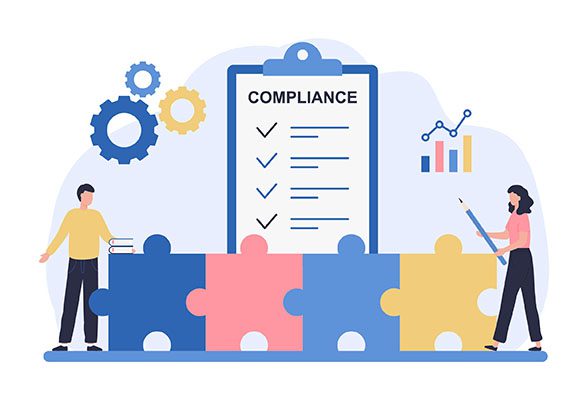Managing hundreds of regulations that inform your post-acute care organization’s compliance requirements is complex. Juggling everything can be confusing — and expensive.
Every year, healthcare organizations spend billions on regulatory compliance. According to the American Hospital Association’s Regulatory Overload Report, health systems, hospitals, and post-acute care organizations spend about $39 billion annually to comply with up to 629 federal regulatory requirements (341 for hospitals and 288 for post-acute care).
Federal and state regulations change frequently. Increased home health regulations, staffing requirements for nursing homes, expiration of the COVID-19 public health emergency waivers — and more regulations on the horizon — make keeping up with the changes and navigating necessary training requirements daunting.
“Compliance is extremely important, especially with the renewed focus on surveys and enforcement actions now that we are moving beyond the COVID-19 public health emergency,” said Corinne Epton, MHA, CHA, CCEP, Relias Regulatory and Compliance Manager. “It is important for staff and supervisors to see compliance as a priority in their organization.”
Despite the increased focus on compliance, only 48% of post-acute care organizations use a learning management system to track staff training, according to the Relias 2023 State of Healthcare Training and Staff Development Report.
Below are some steps to help you transform compliance from a burden to a competitive advantage.
Streamline compliance processes
With efficient and effective tools, compliance management doesn’t have to be a burden. Instead, a coordinated, practical, and strategic compliance management system can serve as your roadmap to competence, commendable outcomes, and competitive advantage.
You can reduce your time and effort on compliance-related activities by eliminating redundant tasks, simplifying workflows, and centralizing compliance management. Implementing a unified compliance management system allows you to track regulatory requirements efficiently, monitor compliance status in real time, and ensure timely responses to any potential compliance issues.
Automate documentation
One of the key challenges in compliance management is the extensive documentation required to demonstrate adherence to regulations. Manual documentation processes are time-consuming and prone to human errors and inconsistencies.
By leveraging technology solutions like electronic health records and compliance management software, you can automate documentation processes, reducing the administrative burden on staff. Automated systems can generate accurate and complete reports, ensuring compliance with regulatory requirements while saving valuable time and resources.
Use analytics to identify compliance risk
By harnessing the power of data analytics, you can proactively identify compliance risks and take preventive measures before they escalate into compliance violations. By analyzing patterns, trends, and outliers in the data, you can identify potential areas of noncompliance and implement targeted interventions to address them. This proactive approach minimizes the risk of regulatory penalties and helps improve the overall quality of care.

Ensure adherence to regulations
Compliance is a legal requirement and crucial to providing high-quality care. By integrating compliance management with clinical workflows, you can ensure that regulatory requirements are seamlessly incorporated into daily operations. Real-time alerts and reminders can prompt staff to adhere to specific protocols, documentation requirements, and reporting obligations. This integration helps embed compliance into the organizational culture, minimizing the risk of non-compliance and supporting the delivery of safe, effective, and patient-centric care.
Improve quality of care, reputation, and competitiveness
Transforming compliance from a burden to a competitive advantage has far-reaching benefits for post-acute care organizations. By streamlining compliance processes, automating documentation, and using data analytics, organizations can ensure adherence to regulations while optimizing resource utilization.
This, in turn, improves the overall quality of care delivered to patients, leading to better health outcomes and patient satisfaction.
A strong compliance program also enhances your organization’s reputation as a provider that prioritizes patient safety and adherence to regulations, which can lead to more referrals and partnerships. Moreover, a proactive approach to compliance demonstrates your organization’s commitment to continuous improvement and positions you as a leader in the market.
Adopting technology and leveraging these strategies can help your post-acute care organization successfully transform your approach to compliance into a competitive advantage.

Compliance to Competence: A Roadmap to Success
With increased regulation changes, building an organization where compliance is part of your culture is necessary. Corinne Epton, Manager of Regulatory and Compliance at Relias, hosts this webinar for all post-acute healthcare organizations.
Watch the Webinar →





